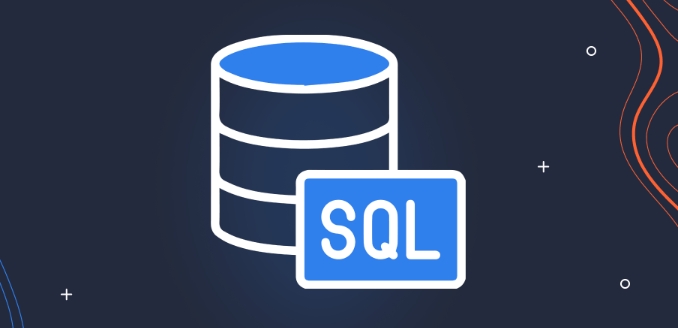SQL is a structured query language used to manage and query relational databases; MySQL is an open source relational database management system with SQL as the query language. SQL is used as a standard language to create, operate and retrieve data in a database and is supported by a variety of database systems, such as PostgreSQL, Oracle, etc.; while MySQL provides specific database management functions, which are often used in Web applications and include specific optimizations and extensions. The difference between the two is that SQL is an interactive language, and MySQL is a data management system that implements the language. When choosing, you should weigh performance, functionality, compliance and cost factors based on your needs.

SQL and MySQL are often mentioned together, but they serve different purposes. SQL is a language used to manage and query relational databases, while MySQL is a specific database management system that uses SQL.

What Is SQL?
SQL stands for Structured Query Language. It's the standard language used to interact with relational databases. With SQL, you can create tables, insert data, update records, delete entries, and retrieve information using queries.
- You use SQL commands like
SELECT,INSERT,UPDATE, andDELETEto work with data. - SQL is not a database system itself—it's more like a tool you use with database systems.
- Many platforms support SQL, including MySQL, PostgreSQL, Oracle, and Microsoft SQL Server.
In short, SQL is the language; it doesn't run on its own. Think of it like English—many people speak it, but each person might have their own accent or style.

What Is MySQL?
MySQL is an open-source relational database management system (RDBMS) that uses SQL as its query language. It stores data in tables and allows users to manage that data using SQL commands.
- MySQL provides the infrastructure to store, organize, and retrieve data efficiently.
- It's commonly used in web applications and is part of the popular LAMP stack (Linux, Apache, MySQL, PHP).
- MySQL has its own features and extensions beyond standard SQL, such as specific functions and optimizations.
You can think of MySQL as one of many "speakers" of SQL. It understands SQL commands and executes them based on how it's built.

How Are They Different?
The main difference lies in what each does:
- SQL is the language used to communicate with databases.
- MySQL is a software system that implements that language and manages data.
Here's a simple comparison:
- If SQL is like a driver's license, then MySQL is like a car.
- You need the license (SQL) to drive (interact with) the car (database system like MySQL).
Also, other RDBMSs like PostgreSQL or SQLite also use SQL, but they may have slight variations in syntax or features.
When Should You Use MySQL vs. Other SQL Databases?
Choosing between MySQL and another SQL-based database depends on your needs:
- Use MySQL if you're building a web application and want something fast, reliable, and easy to set up.
- Consider alternatives like PostgreSQL if you need advanced features, complex queries, or stricter standards compliance.
Some things to consider:
- Performance needs
- Hosting environment
- Community and support
- Licensing costs
If you're just learning SQL, starting with MySQL is a solid choice because it's widely used and well-documented.
Basically that's it.
The above is the detailed content of What is the difference between SQL and MySQL?. For more information, please follow other related articles on the PHP Chinese website!

Hot AI Tools

Undress AI Tool
Undress images for free

Undresser.AI Undress
AI-powered app for creating realistic nude photos

AI Clothes Remover
Online AI tool for removing clothes from photos.

Clothoff.io
AI clothes remover

Video Face Swap
Swap faces in any video effortlessly with our completely free AI face swap tool!

Hot Article

Hot Tools

Notepad++7.3.1
Easy-to-use and free code editor

SublimeText3 Chinese version
Chinese version, very easy to use

Zend Studio 13.0.1
Powerful PHP integrated development environment

Dreamweaver CS6
Visual web development tools

SublimeText3 Mac version
God-level code editing software (SublimeText3)

Hot Topics
 How to use IF/ELSE logic in a SQL SELECT statement?
Jul 02, 2025 am 01:25 AM
How to use IF/ELSE logic in a SQL SELECT statement?
Jul 02, 2025 am 01:25 AM
IF/ELSE logic is mainly implemented in SQL's SELECT statements. 1. The CASEWHEN structure can return different values ??according to the conditions, such as marking Low/Medium/High according to the salary interval; 2. MySQL provides the IF() function for simple choice of two to judge, such as whether the mark meets the bonus qualification; 3. CASE can combine Boolean expressions to process multiple condition combinations, such as judging the "high-salary and young" employee category; overall, CASE is more flexible and suitable for complex logic, while IF is suitable for simplified writing.
 How to create a temporary table in SQL?
Jul 02, 2025 am 01:21 AM
How to create a temporary table in SQL?
Jul 02, 2025 am 01:21 AM
Create temporary tables in SQL for storing intermediate result sets. The basic method is to use the CREATETEMPORARYTABLE statement. There are differences in details in different database systems; 1. Basic syntax: Most databases use CREATETEMPORARYTABLEtemp_table (field definition), while SQLServer uses # to represent temporary tables; 2. Generate temporary tables from existing data: structures and data can be copied directly through CREATETEMPORARYTABLEAS or SELECTINTO; 3. Notes include the scope of action is limited to the current session, rename processing mechanism, performance overhead and behavior differences in transactions. At the same time, indexes can be added to temporary tables to optimize
 How to get the current date and time in SQL?
Jul 02, 2025 am 01:16 AM
How to get the current date and time in SQL?
Jul 02, 2025 am 01:16 AM
The method of obtaining the current date and time in SQL varies from database system. The common methods are as follows: 1. MySQL and MariaDB use NOW() or CURRENT_TIMESTAMP, which can be used to query, insert and set default values; 2. PostgreSQL uses NOW(), which can also use CURRENT_TIMESTAMP or type conversion to remove time zones; 3. SQLServer uses GETDATE() or SYSDATETIME(), which supports insert and default value settings; 4. Oracle uses SYSDATE or SYSTIMESTAMP, and pay attention to date format conversion. Mastering these functions allows you to flexibly process time correlations in different databases
 What is the purpose of the DISTINCT keyword in a SQL query?
Jul 02, 2025 am 01:25 AM
What is the purpose of the DISTINCT keyword in a SQL query?
Jul 02, 2025 am 01:25 AM
The DISTINCT keyword is used in SQL to remove duplicate rows in query results. Its core function is to ensure that each row of data returned is unique and is suitable for obtaining a list of unique values ??for a single column or multiple columns, such as department, status or name. When using it, please note that DISTINCT acts on the entire row rather than a single column, and when used in combination with multiple columns, it returns a unique combination of all columns. The basic syntax is SELECTDISTINCTcolumn_nameFROMtable_name, which can be applied to single column or multiple column queries. Pay attention to its performance impact when using it, especially on large data sets that require sorting or hashing operations. Common misunderstandings include the mistaken belief that DISTINCT is only used for single columns and abused in scenarios where there is no need to deduplicate D
 What is the difference between WHERE and HAVING clauses in SQL?
Jul 03, 2025 am 01:58 AM
What is the difference between WHERE and HAVING clauses in SQL?
Jul 03, 2025 am 01:58 AM
The main difference between WHERE and HAVING is the filtering timing: 1. WHERE filters rows before grouping, acting on the original data, and cannot use the aggregate function; 2. HAVING filters the results after grouping, and acting on the aggregated data, and can use the aggregate function. For example, when using WHERE to screen high-paying employees in the query, then group statistics, and then use HAVING to screen departments with an average salary of more than 60,000, the order of the two cannot be changed. WHERE always executes first to ensure that only rows that meet the conditions participate in the grouping, and HAVING further filters the final output based on the grouping results.
 Defining Database Schemas with SQL CREATE TABLE Statements
Jul 05, 2025 am 01:55 AM
Defining Database Schemas with SQL CREATE TABLE Statements
Jul 05, 2025 am 01:55 AM
In database design, use the CREATETABLE statement to define table structures and constraints to ensure data integrity. 1. Each table needs to specify the field, data type and primary key, such as user_idINTPRIMARYKEY; 2. Add NOTNULL, UNIQUE, DEFAULT and other constraints to improve data consistency, such as emailVARCHAR(255)NOTNULLUNIQUE; 3. Use FOREIGNKEY to establish the relationship between tables, such as orders table references the primary key of the users table through user_id.
 What is a sequence object in SQL and how is it used?
Jul 02, 2025 am 01:21 AM
What is a sequence object in SQL and how is it used?
Jul 02, 2025 am 01:21 AM
AsequenceobjectinSQLgeneratesasequenceofnumericvaluesbasedonspecifiedrules,commonlyusedforuniquenumbergenerationacrosssessionsandtables.1.Itallowsdefiningintegersthatincrementordecrementbyasetamount.2.Unlikeidentitycolumns,sequencesarestandaloneandus
 Key Differences Between SQL Functions and Stored Procedures.
Jul 05, 2025 am 01:38 AM
Key Differences Between SQL Functions and Stored Procedures.
Jul 05, 2025 am 01:38 AM
SQLfunctionsandstoredproceduresdifferinpurpose,returnbehavior,callingcontext,andsecurity.1.Functionsreturnasinglevalueortableandareusedforcomputationswithinqueries,whileproceduresperformcomplexoperationsanddatamodifications.2.Functionsmustreturnavalu






